They call it the Banana Pancake Trail.
The tired backpacking route across the Southeast Asian peninsula — Thailand, Cambodia, Laos, and Vietnam — is known in the travel world as the Banana Pancake Trail for the numerous stalls selling this delicious snack in the cities along the trail. Over the years, as more backpackers explore further and longer, the trail has grown to span a few previously off-the-beaten-path stops and sometimes other ASEAN countries like Malaysia and Myanmar.
This route is popular for a reason. It’s exotic, “tourist-friendly”, and most importantly, cheap, the qualities that make a destination perfect for both seasoned and newbie backpackers, especially those traveling alone. Despite being hackneyed, it is still something I can recommend to first-time backpackers.
When I quit my full-time job in 2012, the first thing I did was head for the Banana Pancake Trail to have my solo backpacking debut. It was one of my most unforgettable trips to date. For a Southeast Asian like me, although the region looks, tastes, and sounds different, it still fosters an atmosphere that made me feel like home. It is no surprise that we returned again and again.
- 2012: Siem Reap, Bangkok, Chiang Mai, Vang Vieng, Luang Prabang, Ha Long Bay, Hanoi
- 2012: Singapore, Malacca, Kuala Lumpur, Langkawi, Penang, Cameron Highlands
- 2014: Phuket, Krabi, Bangkok, Ayutthaya, Siem Reap, Ho Chi Minh City, Phan Thiet, Mui Ne
- 2016-2019: Individual trips to Myanmar, Malaysia, and Thailand.
In this article, we’ll be sharing with you how we plan our backpacking trips across Southeast Asia. Note that this will heavily focus on Continental ASEAN (Indochina) + Singapore. We will be writing separate posts for the Philippines and Indonesia.
If you’re interested in just one destination, here are our specific posts:
THAILAND
VIETNAM
CAMBODIA
INDONESIA
MYANMAR
MALAYSIA
SINGAPORE
If you want to go on a multi-country journey across the ASEAN region, here’s a guide on how to build your itinerary and plan your trip.
1. Determine your budget and travel duration.
How much time and money do you have? If you’re working full time just taking a break, how many days can you spare for this trip?
If you’re holding a Philippine passport, know that you are only allowed the following days visa-free:
- Brunei – 14 days
- Cambodia – 21 days
- Indonesia – 30 days
- Laos – 30 days
- Malaysia – 30 days
- Myanmar – 14 days
- Singapore – 30 days
- Thailand – 30 days (up to 2 visits per year if not arriving by air)
- Vietnam – 21 days
2. Pick your travel dates
Much of continental Southeast Asia enjoys a tropical climate, with a few exceptions in the Northern parts of Vietnam and Myanmar. The weather is generally hot and humid year-round. But it’s not really the temperature that can put a damper on your travel plans; it’s the rainfall. Monsoons come with a lot of rain, and in some places, typhoons. Here’s a list of countries and their wettest months:
However, data change depending on specific location. Once you have decided on your stops, check the weather again in that city. You may use this tool by the World Bank: Climate Change Knowledge Portal.
Generally speaking, the months of January to April are your driest, safest bet. But here’s the catch: this period is also the peak season, and the prices flights, accommodations and tours tend to be a bit higher. Expect most attractions to be super, mega-crowded. Because of this, I prefer traveling in the shoulder months, the period that is technically part of the rainy season but it hasn’t gone crazy yet. I’ve traveled in June twice and never had a problem with the weather. I also traveled in October, and the only time it poured was in Bangkok. (It was awful, though. I got stranded for hours because the streets were flooded.)
Another thing to consider when choosing dates: events and festivals.
Do you have a specific event that you want to see?
- Wanna see the Yi Peng Lantern Festival in Chiang Mai? Go in early November.
- Want to experience Songkran? Make sure you’re in Thailand on April 13.
- How about Malaysia’s Hari Raya? End of Ramadan.
- Excited to ride a hot-air balloon in Bagan? Visit between mid-October and mid-March.
3. List down all your must-visits.
Are there specific attractions that you want to see?
Note that these are places that you MUST visit. Meaning, these are the reasons why you’re doing this trip in the first place. Don’t include places that you can do without.
For example, let’s assume these are your NON-NEGOTIABLE MUST-VISIT places. In this post, let’s call them as simply “MUST-VISITS”:
- Angkor Wat in Siem Reap
- Sand Dunes of Mui Ne
- Temples of Ayutthaya
Here’s what my map looks like at this point:
4. Choose your entry point.
If you’re like me, you’re probably waiting for an airline to hold a seat sale. That’s okay, but as much as possible, don’t book roundtrip. A roundtrip ticket will prove counterproductive because you will have to return to your first destination. Just book one-way first and then book the return flight after you have built your itinerary.
What’s a good entry point? Bangkok. Most long-term travelers choose to start their trail here because:
- Bangkok lies smack at the heart of the region, which is why it is often dubbed the epicenter of the backpacking culture. Many other destinations in Indochina can be easily accessed from Bangkok: Vientiane is just a bus-ride away. Siem Reap can be reached within the day.
- It’s one of the busiest and most connected cities in the world. If you’re living in a major city, chances are, there’s a direct flight from where you are to Bangkok.
- It is also tourist-friendly. Locals are used to tourists, and scams notwithstanding, it is relatively safe.
Bangkok is an ideal first stop. If you think this backpacking thing is a game, Bangkok is Level 1. It only gets harder from here, but you wouldn’t even notice because Bangkok would subtly prepare you for it.
If you’re coming from the Philippines, flights to Bangkok are some of the cheapest, probably just behind Singapore and Kuala Lumpur. I did a quick check with Cebu Pacific and these are their current rates:
5. Plot your route.
Now that you have listed down your must-visits and entry point, use them as the backbone of your itinerary.
Get a map and mark your must-visits. If we use the example above, mark Ayutthaya, Siem Reap, and Mui Ne.
Figure out where it makes sense to spend your nights. For example, Ayutthaya is actually pretty accessible from Bangkok. If you’re just after the temples, do you think you can do it in a day? If yes, maybe you should stay in Bangkok instead, where there’s much more to see and do?
Now look at the areas surrounding these marked places and the areas in between. Are there any other destinations that would be nice if you could visit? Phnom Penh is along the way; would you like to make a stop here? How about Sihanoukville? It’s not along the way, but you can easily make a detour there from Siem Reap.
Ho Chi Minh City (Saigon) also lies along the path from Siem Reap to Mui Ne. And it is actually the major city closest to Mui Ne. And because it is a major city, plane tickets might be a lot cheaper here, making it an ideal choice for an exit point.
Decide how many days you want to stay in each city. Personally, I find 3 days per stop the minimum for the trip to still be comfortable. But that’s just me. I know travelers who stay for only 2-3 days per stop. For this post, let’s place the minimum at 3 for your must-visits and 2 days for the other stops.
So now we have the following stops for sure:
- Day 1-4: Bangkok + Ayutthaya
- Day 5-7: Siem Reap
- Day 8-9: Phnom Penh
- Day 10-12: Mui Ne
- Day 13-14: Ho Chi Minh City
To be honest, I still find that a little too tight. Maybe because I’m old. Haha. Don’t be afraid to remove a stop if you’re not that convinced.
If it were me, I would just skip Phnom Penh and spend more time in Ho Chi Minh City and Siem Reap.
- Day 1-4: Bangkok + Ayutthaya
- Day 5-8: Siem Reap
- Day 9-11: Mui Ne
- Day 12-14: Ho Chi Minh City
Important: Be flexible. In this post, I’m just demonstrating how I plan an ASEAN trip. BUT I understand that nothing is set in stone. Often, I only plan to have a general direction and have a ballpark figure for the budget, but I don’t really book anything way in advance because I don’t want to be trapped in a rigid itinerary. When you’re already out there, follow your heart. If you feel like staying longer at a destination or skipping others or even change your plans entirely, do it. No one is pointing a gun to your head to stick to your original plan.
6. Research lodging costs.
You’ll be surprised by how cheap rooms are in this part of the world. Hotels are inexpensive. Hostels and guesthouses are insanely cheap. When I was in Chiang Mai, my bed was at 180 baht (P260) per night. When I was in Luang Prabang, I was just walking along the Mekong when someone offered one of his rooms for only 40,000 kip (P250). That room in Luang Prabang was huge, had an ensuite toilet and bath, well-ventilated, and located in the town’s historic core!
Singapore is an exception, though. Cheap takes a very different definition in Singapore. Haha
Here are more tips.
- If you’re traveling alone and you’re concerned about the budget, consider booking dorm beds. It’s waaay cheaper than booking a private room. It’s also a great way to meet other travelers and make new friends.
- If you’re a pair, you may consider booking two dorm beds or a private room, depends on the situation. If you’re a duo wanting to meet people, the dorm is still a good choice. If you’re a couple on a romantic getaway or a honeymoon, my god, please get a private room (haha!). Note, though, that in many hostels, the bedrooms may be private but the toilet and bath are sometimes shared. Check the arrangement before booking.
- If you’re a group of three, you may find Triple Rooms. You may also check their policy on extra person on Double/Twin rooms. It’s a great way to save!
Here are the usual costs of budget accommodations per night.
Since we’re in the budgeting stage, DON’T BOOK YET. Just take note of the costs!
A good way to do it is to visit Agoda, enter the city, and check if there’s something that interests you. You can also sort it by PRICE.
You may also search here: Southeast Asia Hotels
Using our example above, here’s how much I’ll be spending on accommodations:
That’s USD 78 (P3,900) for the entire 13 nights.
(Actually, only $73 because from Siem Reap to Ho Chi Minh, you’d be taking an overnight bus instead of spending another hotel night in Siem Reap.)
7. Build your itinerary.
Now it’s time to build a specific itinerary. Even if you’re not the itinerary-type traveler, know that it is a requirement when applying for a visa. Here’s a sample:
For more sample Southeast Asian itineraries, read:
8. Book Flights, Hotels, and Transfers.
Flights. If you’re a Filipino, you should definitely book an outgoing flight AND a return flight because the Immigration Officers will look for it before leaving the country.
Hotels. When it’s off-season, I usually just book a room for my first stop, in this case, Bangkok. But in succeeding destinations, I would book just the first night in advance. For example, I’d book a room for my first night in Siem Reap and only the first night. When I finally get there, I’d assess if I like the place. If I don’t, I’d scout the area for another, better hostel. Again, I only do this when it’s off-peak. If you’re traveling in peak season, go ahead and book in advance.
Transportation. I have the same rule when it comes to trains and buses. If it’s off peak, I book when I’m already there. For intercity travels with border crossing, set aside $25 for total fare. That already has a bit of allowance. Bangkok-Siem Reap costs only $20 in total. Siem Reap-HCM is also $20.
But if it’s peak season, it would help if you take care of your tickets beforehand.
For your bus and train needs, book here: 12Go.asia
9. Allocate budget for food, tours, and other daily expenses.
Food
Set aside $15 per day for your meals and water. That’s actually way more than I spent per day. You’ll find rice meals or a bowl of noodle soup for less than $2. Drinks cost less than $1. On “transit days”, make sure that you buy food before boarding because these are long rides and there’s no telling when the next stop will be.
Other ways to save:
- Choose a hostel that serves breakfast.
- For dinner, you can spend whatever is left of your daily food allowance. If you decide to splurge one evening, balance it out by going for cheap options the next day. This is much easier to do if you’re not alone and have someone to split the food and the bill with.
- Watch your booze expenses. Sure, beer is cheap and blah blah, but they add up. Don’t drink every night.
For our 14-day example, prepare $210 (P10,500) for food.
Tours
On average, set aside $30 per day for tours, but don’t count the “transit days” and “rest days”. Transit days are those days when most of your time will spent traveling from one stop to the next and you won’t be able to tour or explore. “Rest days” are those when you would be more relaxed. It doesn’t necessarily mean you’ll just stay in your room. You can still visit attractions but only near ones.
Why only $30? Because many of the attractions can be explored DIY-style. In big cities like Bangkok and Ho Chi Minh, you can use public transportation. In smaller destinations like Siem Reap, Chiang Mai, and Ayutthaya, you can simply rent a bike.
As always, $30/day has a big margin and should only serve as a guideline. If you spend $50 on a tour today, then adjust your activity spending tomorrow.
In our example above, there are only 9 tour days, which means you should prepare $270 (P13,500).
Recap: Breakdown of Expenses
Using our example, here’s how much the whole 14-day journey needs to become reality.
You can round it off to P40,000. It still is a big amount, but consider that it includes non-promo airfare. If you’re able to snag a cheap ticket at a seat sale, you can bring the cost down.
Also, it has a lot of allowance for good measure. To give you an idea, on one of my trips, I spent only $1000 (P50,000) over 1 month in Thailand, Cambodia, Laos, and Vietnam.
Again, this post isn’t supposed to be prescriptive. It’s just a guide to show you how I planned my multi-city tours across ASEAN. At the end of the day, it’s up to you.
2️⃣0️⃣1️⃣9️⃣ • 3️⃣ • 2️⃣4️⃣ (updated)
2️⃣0️⃣1️⃣7️⃣ • 5️⃣ • 2️⃣5️⃣ (first up)
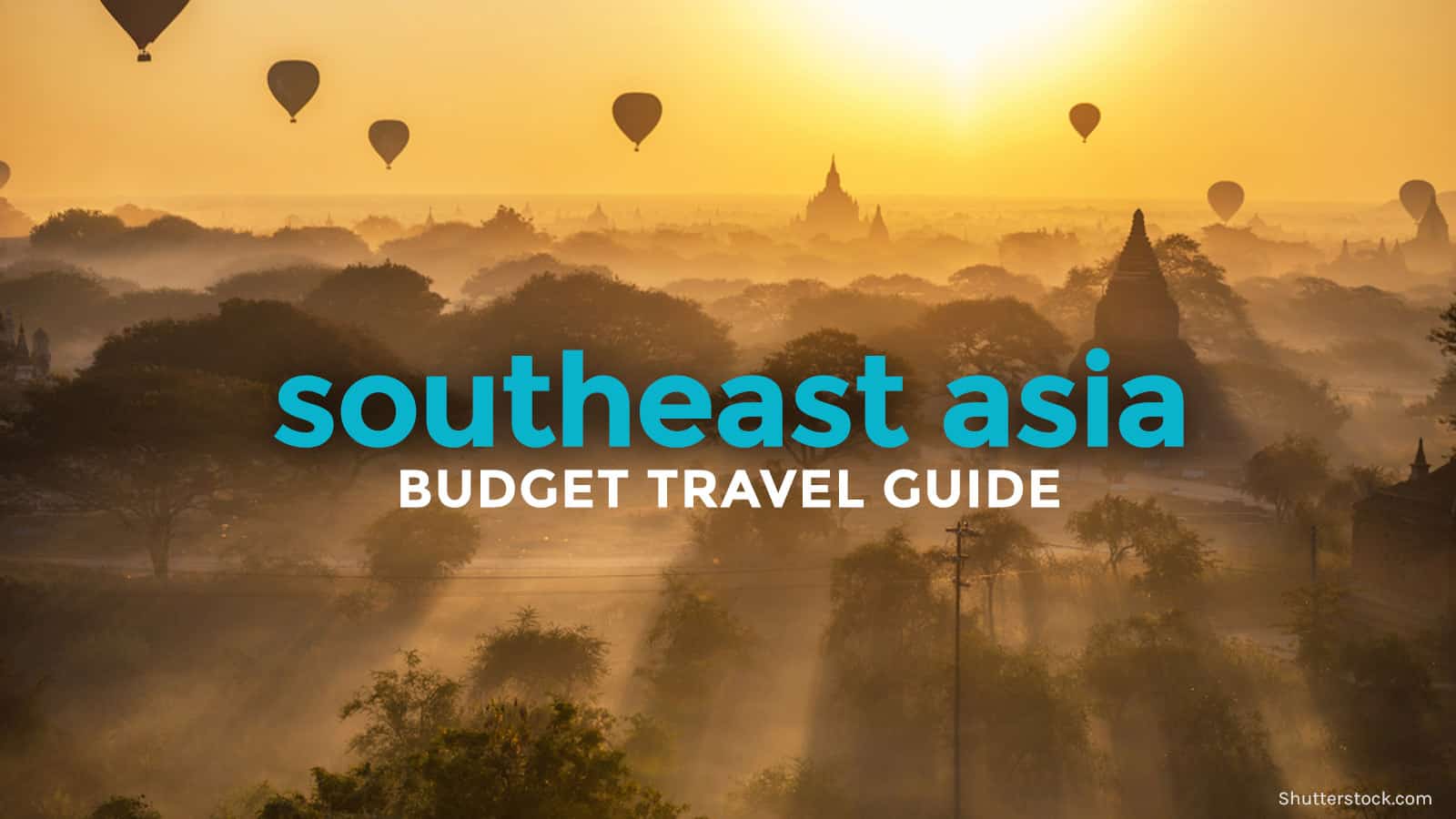


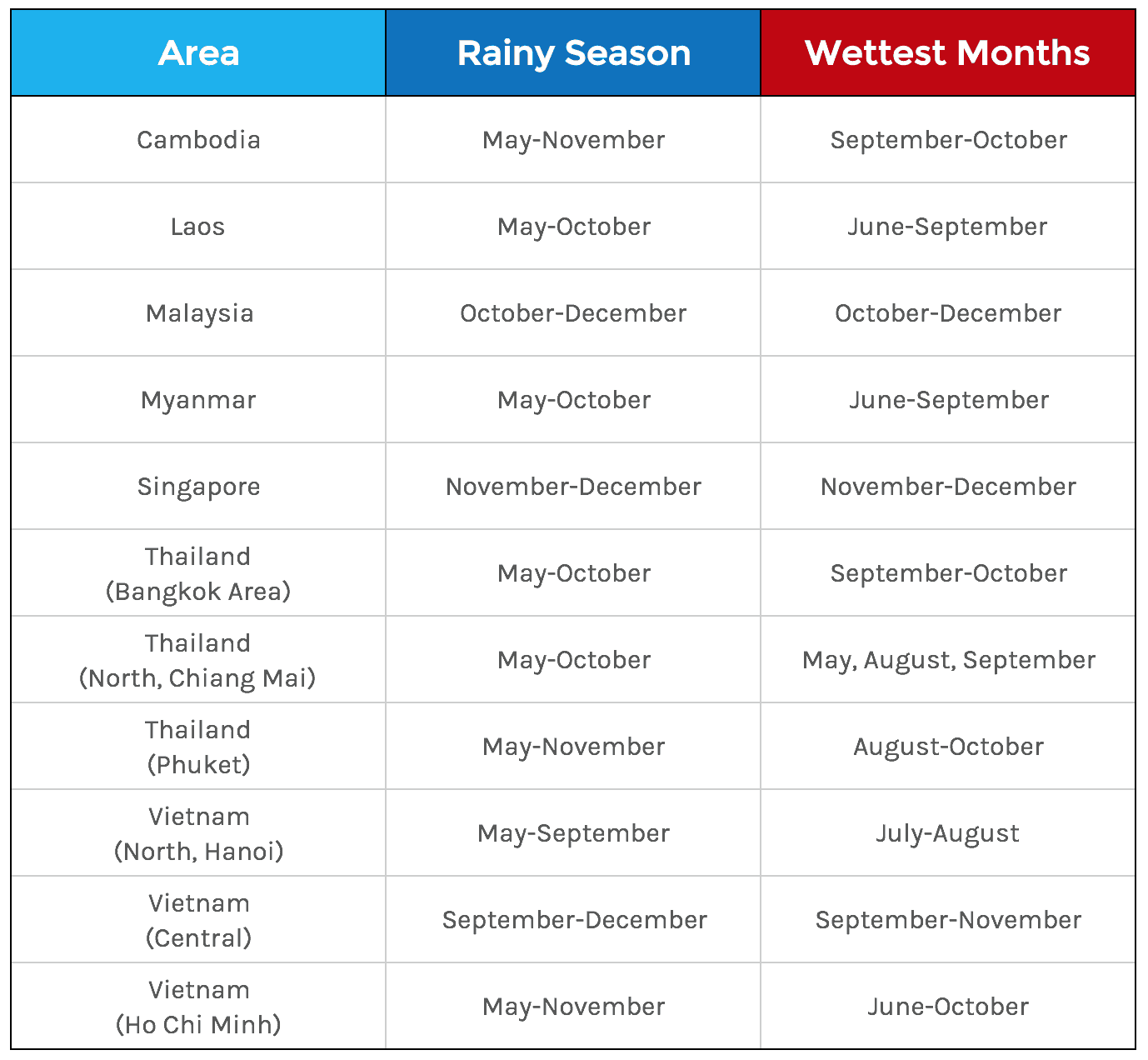
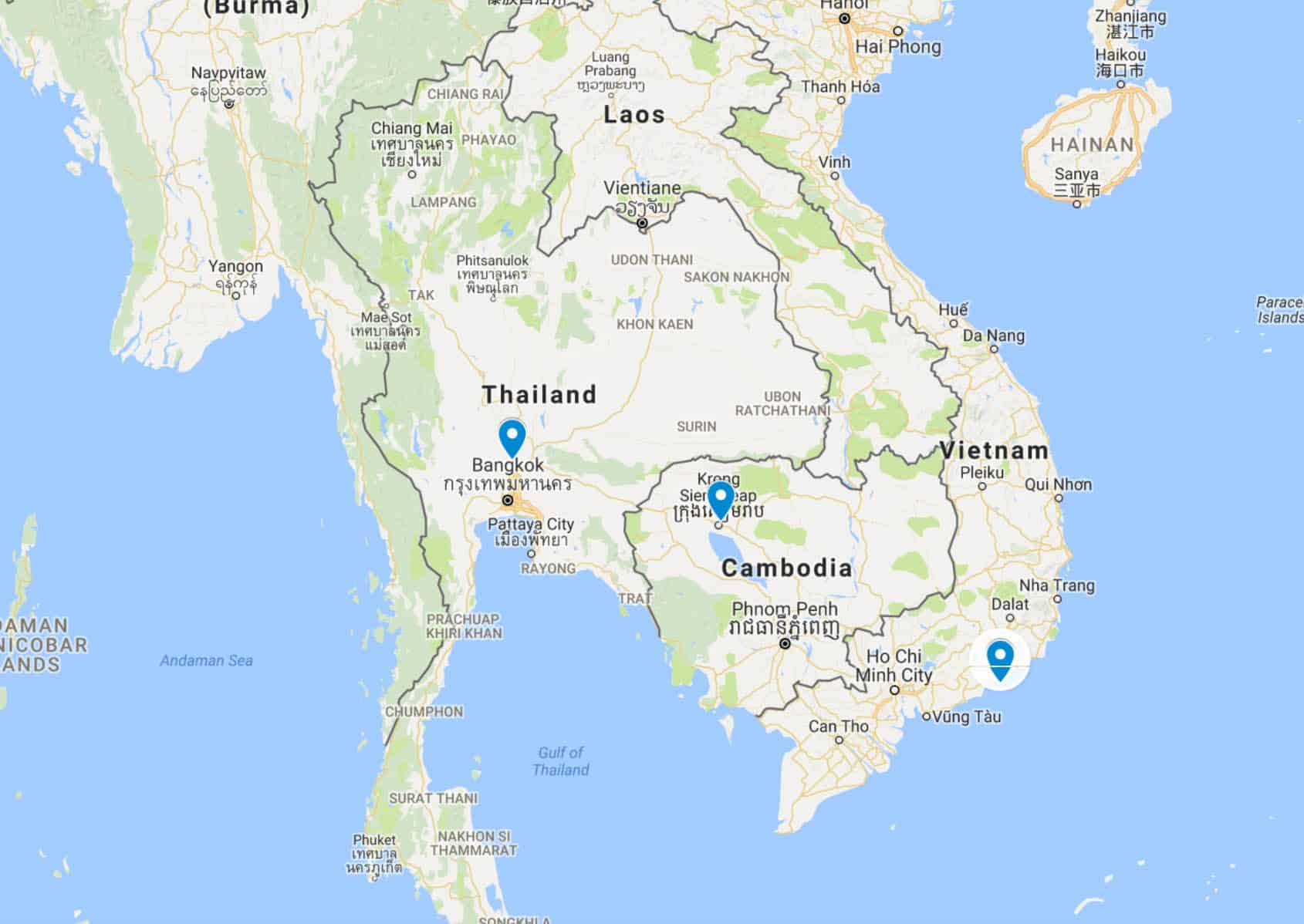

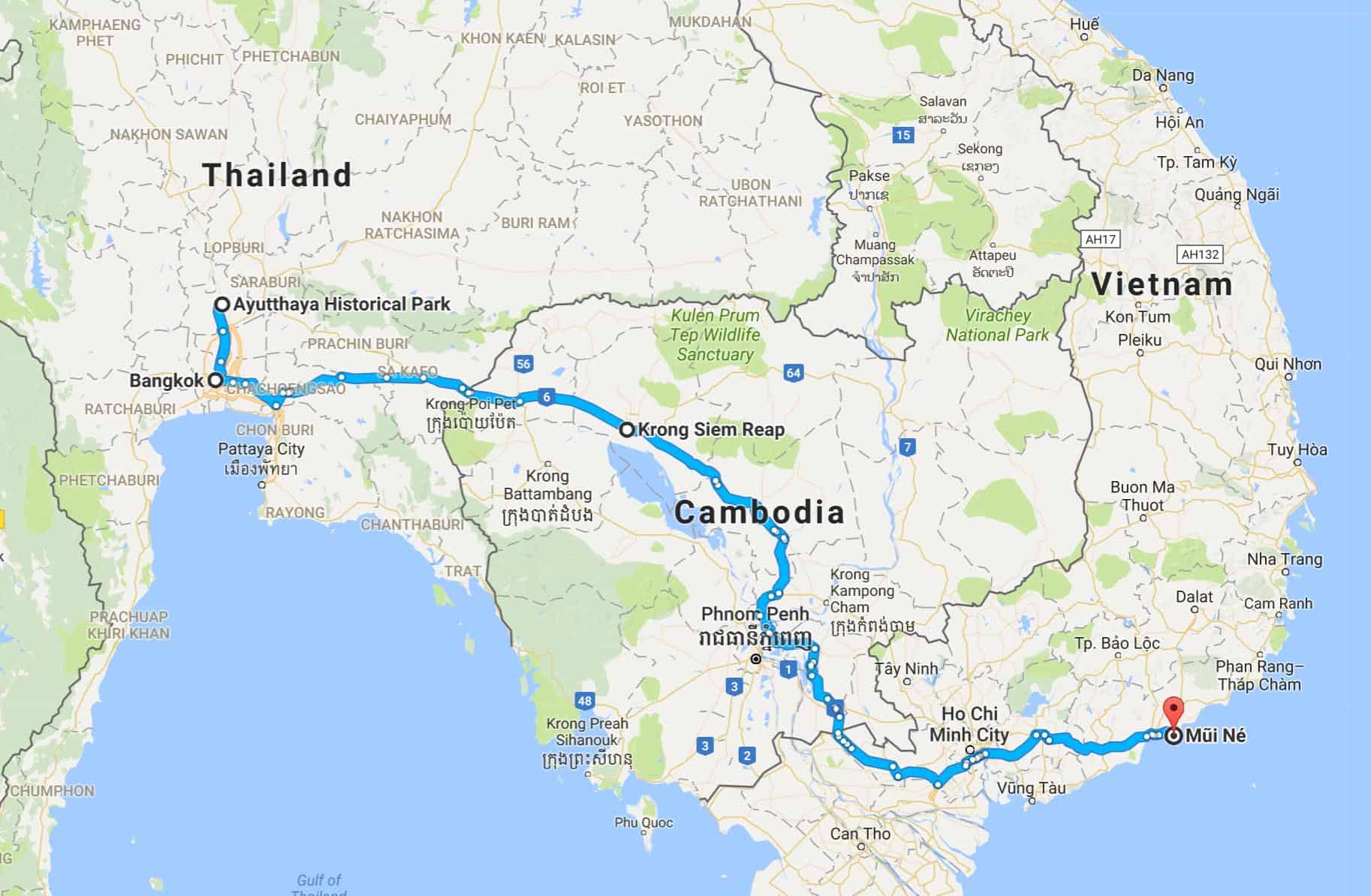
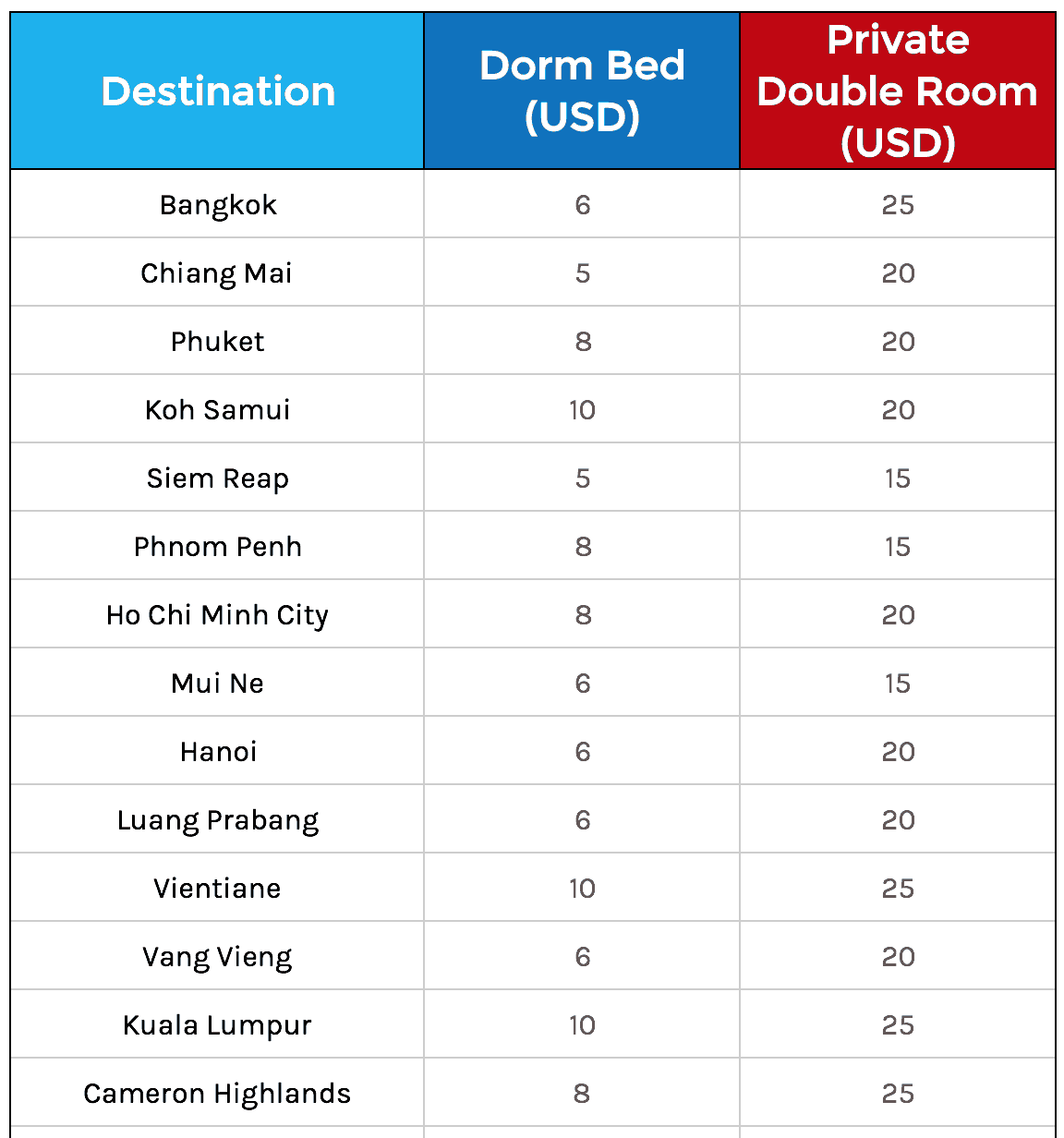

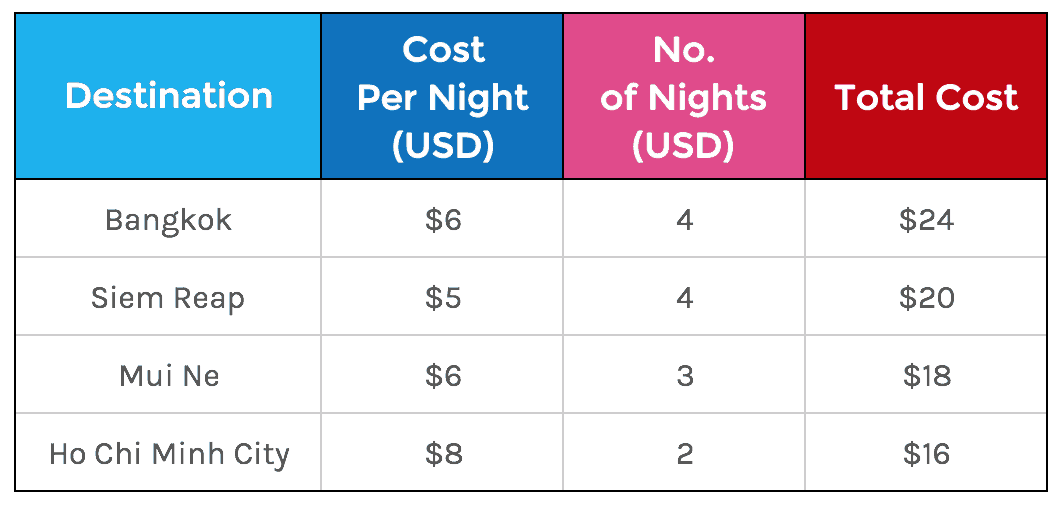
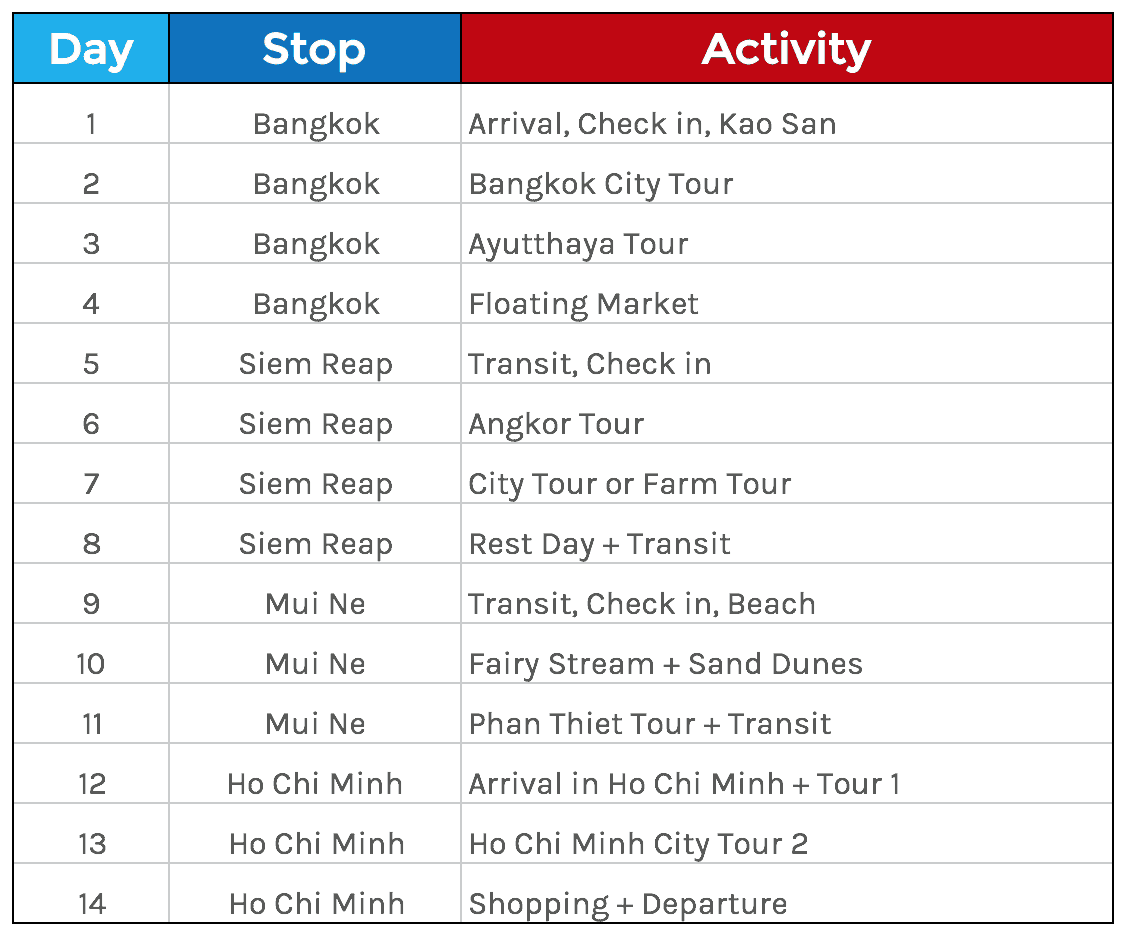
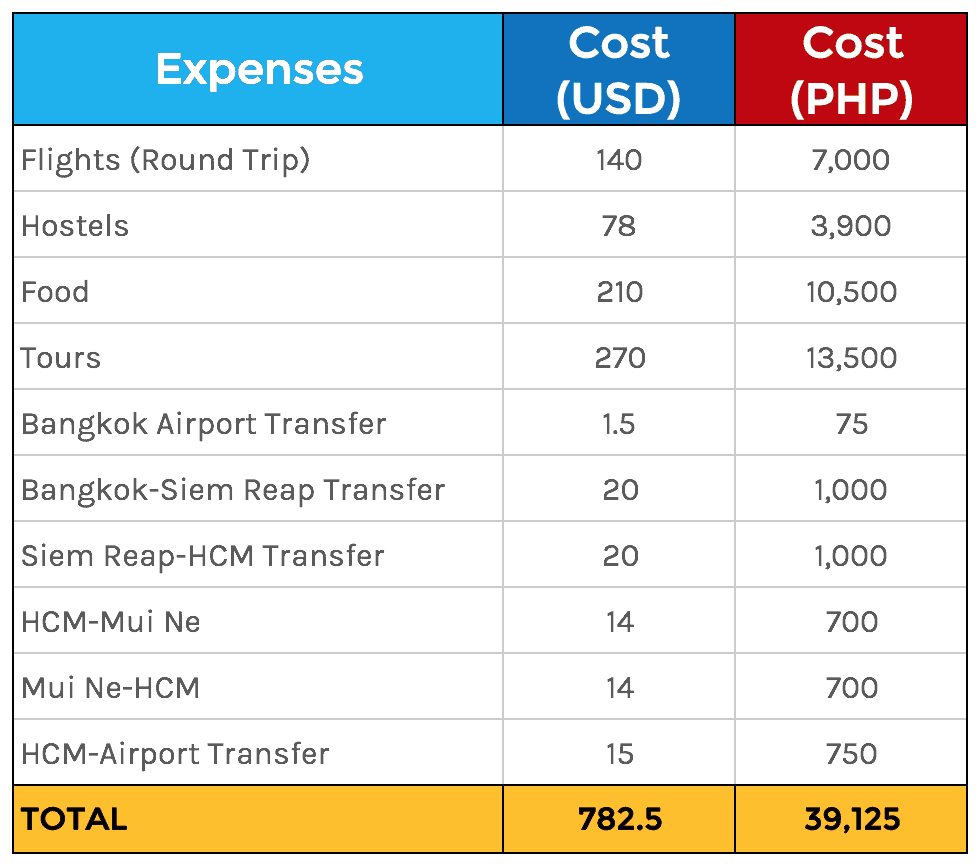




















I find this very helpful! Thank you! Can you do an article about crossing borders? Specially from Bangkok to Siam Reap? Thanks!
That’s our next post! :D
So helpful! Got lots of idea on where to go and what to check.
Thank you so much for this! Will the immigration mind if your ticket shows arrival at Ho Chi Minh and your departure is from Bangkok? And, how did you go through travelling from one country to another? Thank you! :)
No it shouldn’t be a problem. Just prepare an itinerary just in case they ask questions. But often, they’ll just ask you some questions that you need to answer confidently. Meaning, you should know your itinerary by heart.
Traveling from one country to another is easy too. You just need to fill out an arrival and departure cards at the border. You will also be asked where you will be staying in that country so make sure you know the address and contact number of your hotel.
Nice! Great post! All the information are very helpful. Thanks for sharing this article.
Tanong ko lang po after ng travel nyo saang airport po kayo nung bumalik na kayo sa pilipinas kc sabe nio po mas mabuti huwag muna mgbook ng plane ticket kc babalik kayo sa original entry point
Hi Nelfie! What we meant is, don’t book a return flight hangga’t hindi pa final ang itinerary. And no, hindi necessary na bumalik ka sa entry point. For example, the first time we did this, our trip started in Bangkok and exited sa Hanoi. The second time, we entered the region via Phuket and exited via HCM. Once final na itinerary mo, dun ka pa lang magbook ng return ticket. But you need to book the return flight before leaving PH kasi madalas hinahanap yan ng Immigration Officers.
salamat po sir yoshke
what do u mean po sa should definitely book an outgoing flight and a return flight cys imigration officer will check before leaving the country? sa pinas po ba na imigration? peo kc sabe nio po better not to book in advance
Hello. I’m planning to do a tri-city trip in March. My entry point will be HCM but I haven’t booked my trip yet going back to Manila. I’m still planning my itinerary/doing my research but most likely I’ll exit in Bangkok. I am just wondering about the currency exchange. Do you have any advise or tips on this. Thanks
In Vietnam or Cambodia, bring USD. It’s difficult to find changers that accept PHP at a fair rate.
Hi , if I want to go to phuket thailand for the beach hunting, where should I go? Is this place accessible in Bangkok?
Hi Chin! Phuket is 10 hours away from Bangkok by land, 1 hour by air.
Hi, Thanks a lot for your blog. We are planning for an ASEAN trip this June 2018 hopefully. Our entry point will be in Kuala Lumpur then Singapore—HCMC–Phnom Phen– Bangkok and if possible side trip to Laos since its near to BKK (exit point). Surely we will follow most, if not all of your itineraries. :)
Im just wondering if 3 days for each city will be enough to cover the must-see attractions in each city.
Thanks and looking forward for more adventure tips from your blog.
It’s going to be tiring, but yes, that can be done.
The only caveat is that the land travels can eat up your time so you’ll probably end up with just 2 full days per day.
If you can extend even just 1 more day each, that would make your trip A LOT more comfortable.
Dear
Hello. I’m planning to do a IndoChina trip on November. I’m working in Dubai. The plan is from Dubai – BKK then exit SG – Dubai.
2 weeks on BKK, then the other 2 weeks will be Laos, Vietnam, Cambodia, Malaysia and SG.
Can you help to arrange which come first to visit,
Thanks and looking forward for more adventure tips from your blog.
Hi Mark, kaya naman pero medyo too tight pa rin yan for me, unless one city per country lang talaga ivivisit mo or you plan on flying for at least one leg dun sa 5 other countries.
Hi, this is very informative, Will surely refer to your blogs when I plan for my travels. Salamat!
Cool!!! Message us if you need help. We’re always happy to help.
Hello Yoshke!
Greetings!
My wife and I are traveling to Kuala Lumpur next week from Manila, we have four full days in the city can you point us where to go and where to eat cheap but interesting food.. Thanks!
Ariel
Hi Ariel! This might help: https://www.thepoortraveler.net/2017/07/kuala-lumpur-travel-guide/
Hello,
I booked my flight on November 16 to November 19 2018.
Trip to Malaysia Kuala Lumpur.
Can you give some tips what place should I visit and best cuisine to eat with a very affordable and satisfying experience yet affordable.
My hostel is located in Jalan Pudu area.
Thank you!
hi po. can you help me build an itinerary (budget friendly) for a friend’s hongkong and macau trip this sept. 2018. 4 nights-5days trip. without having to stay overnight in macau since they already have thier hotel booked in hongkong for the 4 nights. 9 adults and 4 kids.. thanks
Check out Itinerary #2 here: https://www.thepoortraveler.net/2017/06/hong-kong-travel-guide/
Hello Yoshke! Thank you so much for your info! IT Will Help a lot for me and my friend,Will be travelling on November to Bangkok,I Will follow your advise,thanks a lot
Hi Princess, you may also check out our specific Bangkok guide here: https://www.thepoortraveler.net/2017/07/bangkok-travel-guide/
Hello.
Is it okay kung magdadala ng USD papasok sa tatlong bansa ( Thailand – Cambodia – Vietnam ) or kailangan talaga may card na gamit? Ano po ang mas convenient?
OK lang, basta within sa limit.
Great and detailed blog as usual, Yoshke!
For those interested, on how we crossed the Cambodia-Thailand border, I vlogged about that here: https://www.youtube.com/watch?v=FnU0nqYj1G0
So informative and I want to visit Bangkok next month. Can you tell me the best packages?
Hi po, I’m planning to visit BKK-siem reap-vietnam po in Dec. Can you help me po for some places/attractions to visit for 12 days..? Thank you
Hi! Check out Itinerary #1 po in this post: https://www.thepoortraveler.net/2017/06/southeast-asia-backpacking-routes/#Route_1_Thailand-Cambodia-Vietnam
Bawasan nyo na lang ng 2 days ung sample.
Thank you po
Thank you po
very good information. I feel if details about visa provided wood it be more better
Thanks for sharing such an amazing & informative blog which will surely be a big help to those travelling to the vietnam on a budget trip . There are many beautiful places to visit in vietnam like hoi an,ninh binh,hoi an,hanoi,ho chi minh as these places are the perfect blend of history & modernisation where one can easily find the budgeted accomodation & food.The southern most part which is phan theit,mui ne is considered as the one of the most favourite spot among the tourists.There are many amazing resorts and out of them bamboo village resort is considered as the best resort in mui ne .The reason people like because of the outstanding hospitality they provide along with the delicious vietnamese & continental food.
Hello There,
Nice to read a detailed post. tourists will get help from this post. Like Number 9 where you talk about the daily budget and expense… and your advice to not drink every night. Keep posting / keep supporting tourism .. hope you will visit or write a post about India as well if have wrote then please give me the link to it.
This post is very enlightening, thank you! I have a question lang po, how did you deal with currency exchanges throughout your travel? Did you exchange currencies for every country?
Hi Abby! I usually bring USD and PHP. In countries na OK ang rates ng peso (e.g. Singapore), pinapapalit ko peso. But in my experience, ang hirap maghanap ng OK na rates for peso in Laos/Vietnam/Cambodia, as in sobrang panget ng rates madalas. So safer to bring USD.
This is so helpful! I will be exploring SE Asia next year after an internship in Thailand so this has helped me put my plan together a bit better. Incredible how cheap most places are. I’m still undecided about Singapore though due to how expensive it is. Maybe I’ll do a short trip there, seems a shame to miss it!
Hi, what’s your suggestion about how I can convert my currencies? Like from PH to TH to VT, etc. Thanks
Hi Aldo. PHP to THB, oks lang na sa Thailand mismo since it’s easy to find good rates for PHP there. Pero in my experience, hirap humanap ng good PHP rates sa Cambodia/Laos/Vietnam so ang ginagawa ko is may dala akong USD.